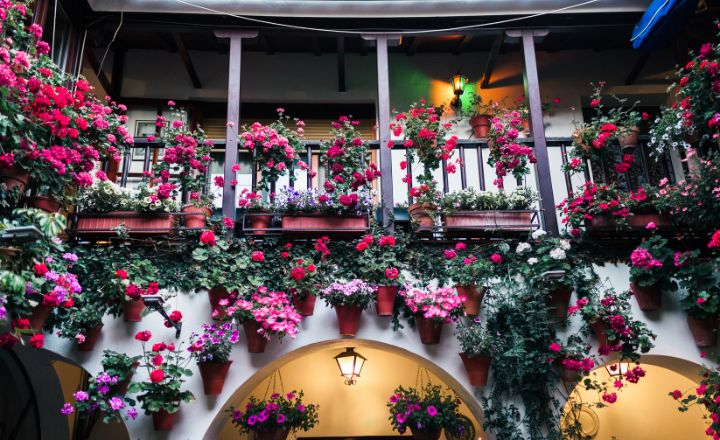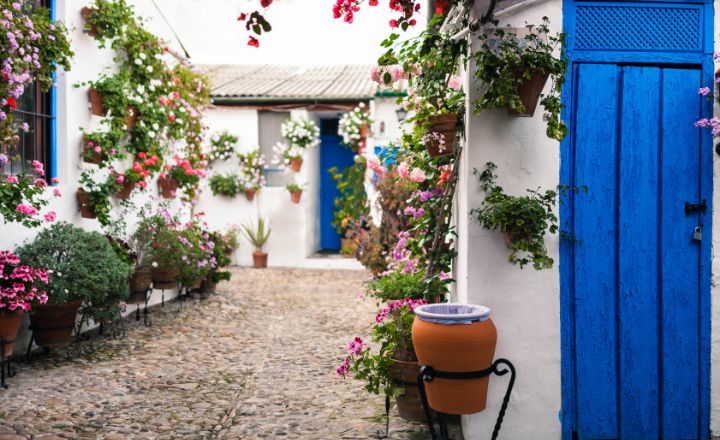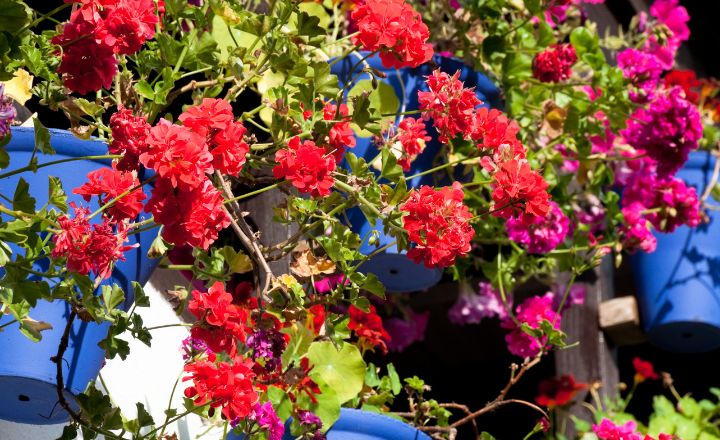The courtyards of Córdoba are one of the biggest tourist attractions in the Andalusian city. These are places created to give light to the house and ventilate it, but at the same time it is a meeting place for family and friends.
Today we want to take you into one of the most splendid times of the city and a visit that you should not miss because visiting the courtyards of Córdoba is a unique experience. In addition, you can see its cathedral, the city of Medina Azahara or its Roman bridge.
What is the origin of the patios of Córdoba?
With the Jewish expulsion after the Christian reconquest, houses with courtyards began to be built at the entrance. It would not be until the nineteenth century when houses with patios became popular in the city of Córdoba, beyond symbolizing poverty, they became rooms of beauty, abundance and solidarity with families. Since the first courtyards were located in communal houses.
Many of these courtyards have served as homes for humble families and also for aristocrats and religious. The most important courtyards in Córdoba are the courtyard of the Naranjos and the Synagogue.

How many patios can we see in Córdoba?
More than 50 private patios and about 8 from public institutions participate in the competition. Therefore, you have to prepare good footwear if you want to get lost in each of them or a large part of them.
The opening hours are from 11:00 a.m. to 2:00 p.m. and from 6:00 to 10:00 p.m. In addition, different routes are distributed on maps provided by the city council.
What is the location of the patios in Córdoba?
The courtyards adorned by the residents of Córdoba and full of flowers are located in the old part of the city. Next to the Mosque of Córdoba and its surroundings you can enter the old streets and visit the private houses to get to know such a beautiful space.
Since when has the Córdoba Courtyard Contest been held?
The Córdoba Courtyards Contest is held after the May crosses. The first half of May and usually lasts about two weeks.
The first contest was held in 1921 although the first years were not successful, it was not until 1933 when this festivity began to be promoted as a tourist attraction.
The modalities of the contest for the festivity of the courtyards of Córdoba are:
- Courtyards of ancient architecture: these are all those built between the 70s of the twentieth century and preserve the architectural structure of the time.
- Courtyards of modern architecture: these are those that were built later, perhaps due to a demolition of the primitive courtyard or because they have been transformed losing their original essence.

Best time to visit the courtyards of the city of Córdoba
The month indicated by the festivity and contest is in May, although it depends on the flowering of the plants. There are patios that are only open to the public during this time, although we can also find homes that open during any time of the year. In any case, spring will always be a good time to take a guided tour of Córdoba’s patios.
How much does it cost to visit the patios of Córdoba?
The entrance to visit the contest of the courtyards of Córdoba is completely free. However, there is a large avalanche of tourists who want to get lost in the corners of the city, so we advise you to get up early if you are going to visit them on some of the days that the contest lasts.
The city council is in charge of setting up public toilets in the visiting areas, information points to facilitate the entry and location of the courtyards, as well as to collect maps of the city.
How important are courtyards for the city?
The courtyards of Córdoba were declared Intangible Cultural Heritage of Humanity by UNESCO on December 6, 2012. Although before that, several venues and associations were held for the preservation of this tradition and culture of the city.
The headquarters of the Friends of the Courtyards is known, which houses artisan workshops and is one of the most visited courtyards. Also in the 60s, the association Claveles y Gitanillas was formalized, which promotes the festivity and carries out educational actions to keep the tradition alive.

